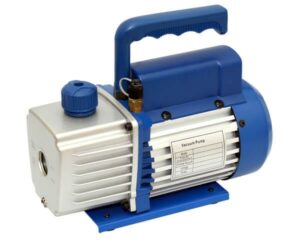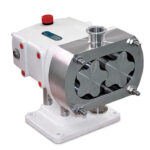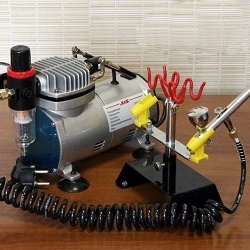How a vacuum pump works: simple questions for experts
In this article you will learn what vacuum is, existing vacuum levels, what characteristics to choose a vacuum pump for, what is the classification of vacuum pumps, the principle of operation of a vacuum pump using the example of screw, membrane and vane-rotor models.

The content of the article
Vacuum and its levels. Purpose of the vacuum pump
Vacuum is the complete absence of matter in an area of space. It is also called a vacuum when the gas pressure in space is less than atmospheric. There are 4 vacuum levels:
- Small (one hundred pascals or more)
- Medium (one hundred to one tenth of a pascal)
- Large (from one tenth to one ten-thousandth of a pascal)
- High (less than one ten thousandth of a pascal)
A vacuum pump is used to create different levels of vacuum. They all work on the principle of sucking gas out of a container, thereby reducing the pressure. Many factors can affect the operation of a vacuum pump: the tightness of the connection and container, the gas being sucked out, the power of the equipment.
Vacuum pump characteristics
There are five main characteristics of a vacuum pump that you need to pay attention to when choosing:
- Initial pressure
- Final pressure
- Maximum pump vacuum level
- Power
- Vacuum creation time
Types of vacuum pumps

Vacuum pumps are divided into two large groups - gas transfer and sorption. The same are divided into other types, types. For example, according to the type of construction they distinguish:
- Mechanical
- Magnetic discharge
- Jet
- Sorptive
- Cryogenic
Below we will look at the three most popular types of vacuum pumps - rotary vane, diaphragm and screw mechanical vacuum pumps.
How do rotary vane vacuum pumps work?
The operating principle of rotary vane vacuum pumps is similar to classical ones - they both “suck” gas/liquid from the container:
The motor rotates the axis with the disk. There are many blades/plates installed on the disk, which are pressed tightly against the walls of the housing inside which they are installed. The blades form sealed cells inside the pump. Such a cell is filled with gas from a container. The motor turns the wheel and another cell closes the inlet tube. The blades push a portion of gas in the cell towards the outlet tube. The gas occupies the entire volume from the blade to the valve of the tube. The blades continue to spin - the volume decreases, the pressure increases. The gas presses on the valve, opens it and escapes. Due to the pressure difference, condensation appears.
How do diaphragm vacuum pumps work?
The operating principle of diaphragm pumps is based on changing the volume of space. Flexible membranes are used for this.
The pump housing has one or two working chambers. They are equipped with a flexible membrane and two rods - upper and lower. When the membrane is “sucked” inward, the pressure in the sealed space decreases. Because of this, the lower rod - a ball or valve - rises, cutting off the gas supply. Gas from the pumped out container fills the open space.After this, the membrane expands and begins to put pressure on the gas. The lower rod seals off the gas supply, and the upper rod opens under high pressure. From the upper rod, gas flows to the outlet tube. After this, the membrane is deflated again, the container is filled with air, and it expands, pushing it through the upper rod into the tube. The cycle repeats.
How screw vacuum pumps work
Screw vacuum pumps consist of a pair of “threaded” screws in a sealed housing. Screw vacuum pumps have two gas inlet and outlet tubes. The gas enters through them and enters a sealed housing with two screws pressed tightly against the walls and each other. There is space between them, which is occupied by gas. This space is limited by the “threads” of one of the screws. Once the motor begins to rotate the screws, their “threads” create a common chamber/cell. This space is filled with gas, after which the “thread” blocks the entrance to the chamber. So the gas moves along the entire screw to the outlet tubes. It is also pushed out of them by the “thread”. That is, the gas moves through sealed cells between the “threads” of the screws, and they push it out of the pump.





